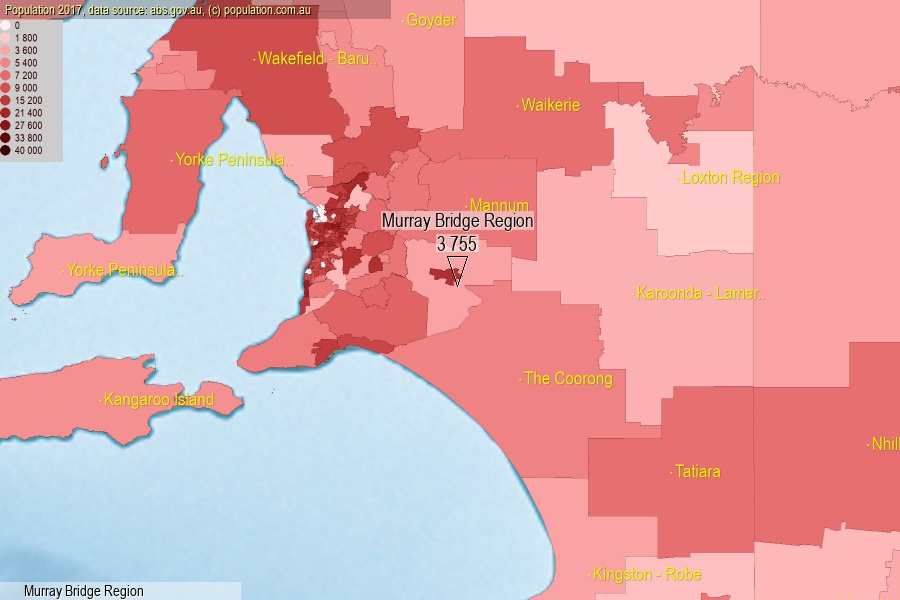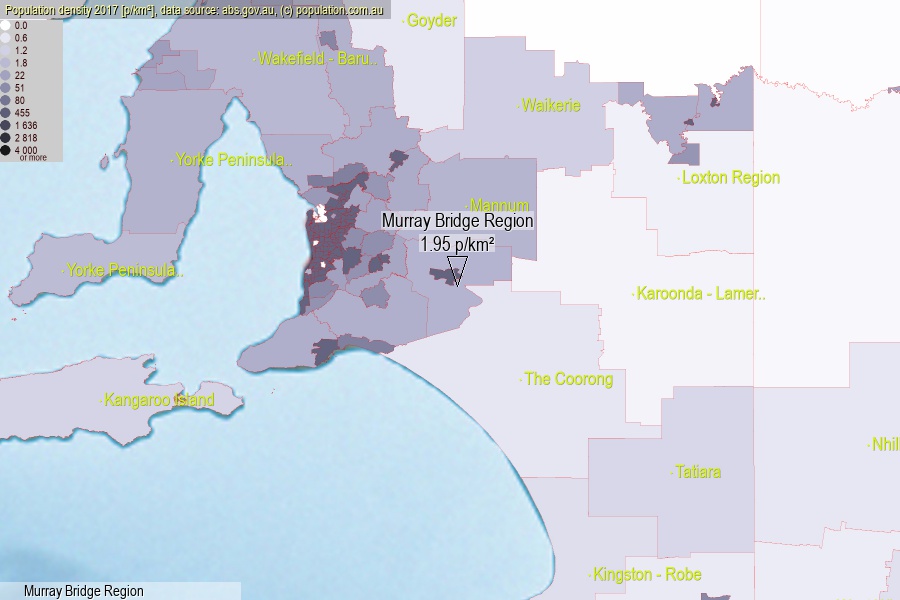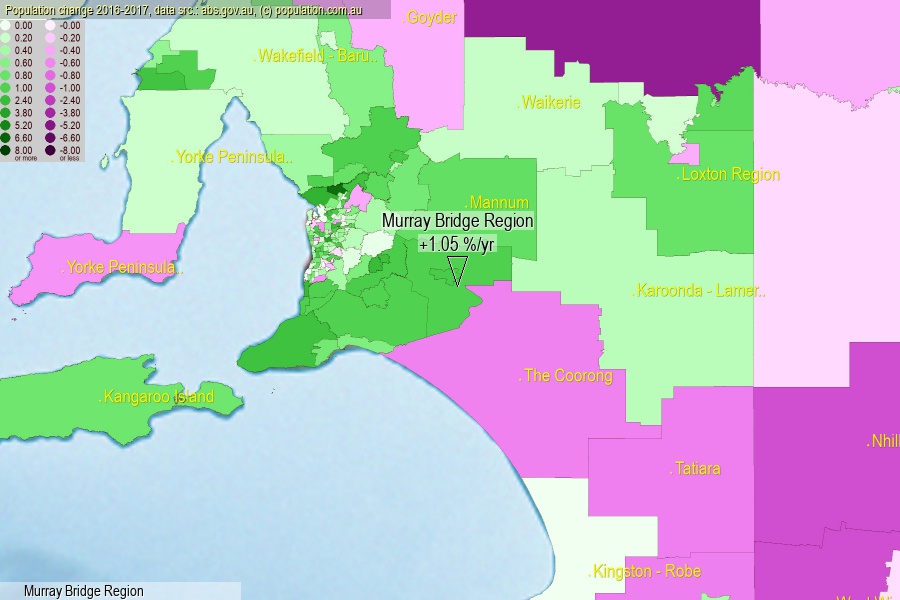 population.com.au
population.com.auLast official estimated population of Murray Bridge Region (as Statistical Area Level 2) was 3 755 people (on 2017-06-30)[2]. This was 0.02% of total Australian population and 0.217% of SA population. Area of Murray Bridge Region is 1 924.50 km², in this year population density was 1.95 p/km² . If population growth rate would be same as in period 2016-2017 (+1.05%/yr), Murray Bridge Region population in 2025 would be 4 082. [0]



Click to enlarge. Murray Bridge Region is located in the center of the images.
Population [people], population density [p./km²] and population change [%/year] [2]
View borders » (new window) [4]
[1991-1992] +1.13 %/Yr.
[1992-1993] -0.70 %/Yr.
[1993-1994] -2.51 %/Yr.
[1994-1995] -1.49 %/Yr.
[1995-1996] -1.94 %/Yr.
[1996-1997] +3.52 %/Yr.
[1997-1998] +3.67 %/Yr.
[1998-1999] +3.66 %/Yr.
[1999-2000] +3.07 %/Yr.
[2000-2001] +3.52 %/Yr.
[2001-2002] +0.63 %/Yr.
[2002-2003] +1.03 %/Yr.
[2003-2004] +0.57 %/Yr.
[2004-2005] +0.93 %/Yr.
[2005-2006] +0.87 %/Yr.
[2006-2007] +0.14 %/Yr.
[2007-2008] +0.19 %/Yr.
[2008-2009] -0.17 %/Yr.
[2009-2010] -1.52 %/Yr.
[2010-2011] -3.59 %/Yr.
[2011-2012] +1.37 %/Yr.
[2012-2013] +1.41 %/Yr.
[2013-2014] +1.70 %/Yr.
[2014-2015] +1.67 %/Yr.
[2015-2016] +1.72 %/Yr.
[2016-2017] +1.05 %/Yr.
[0] Calculated with linear interpolation from officially estimated population
[1] Read more about SA2 and Australian Statistical Geography Standard (ASGS) on abs.gov.au
[2] Population data from Australian Bureau of Statistics (Population and density: 2017; change: 2016-2017)
[3] Digital Boundaries: Australian Statistical Geography Standard (ASGS) 2016.
[4] Border coordinates are simplifyed using Ramer-Douglas-Peucker algorithm.